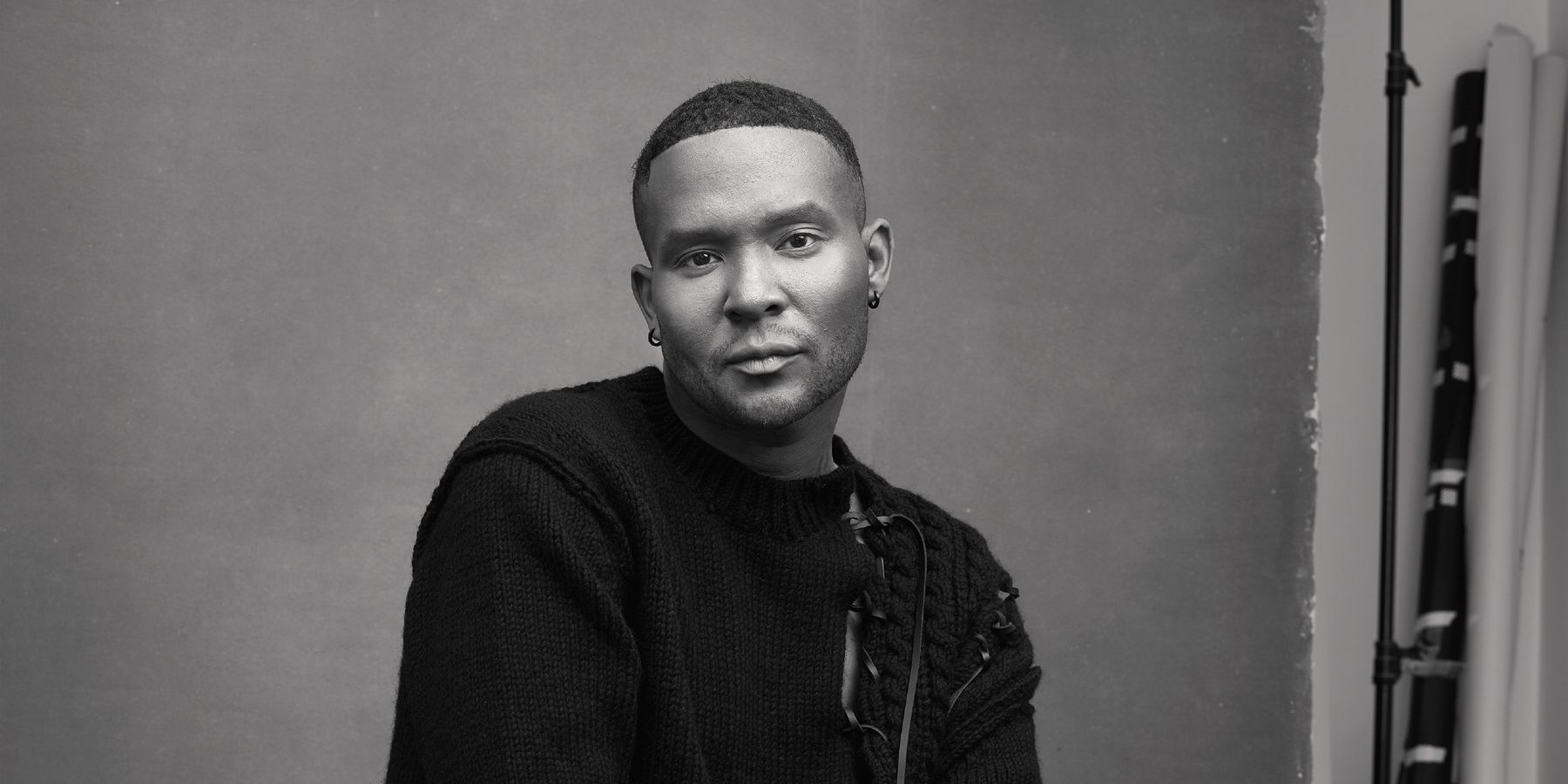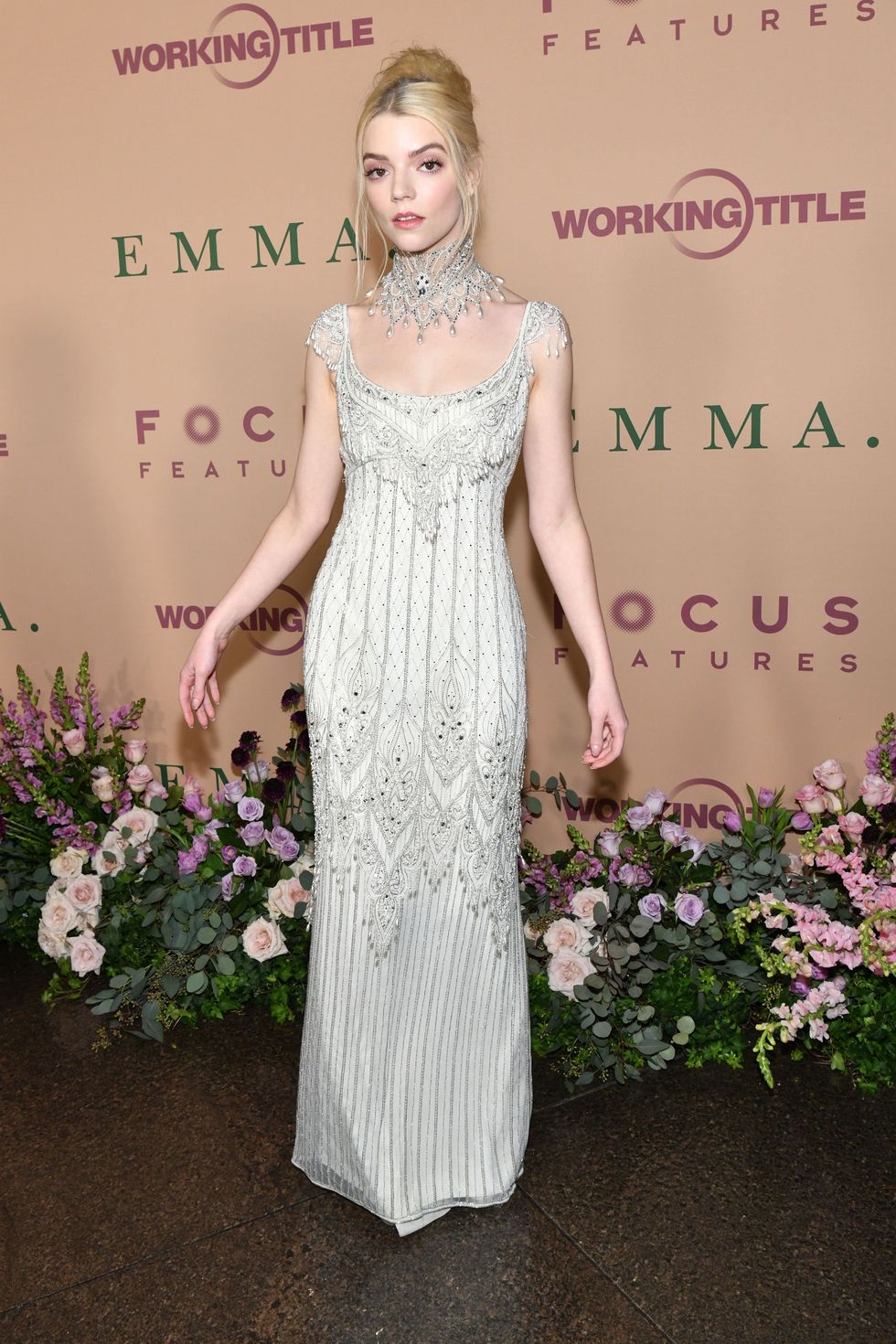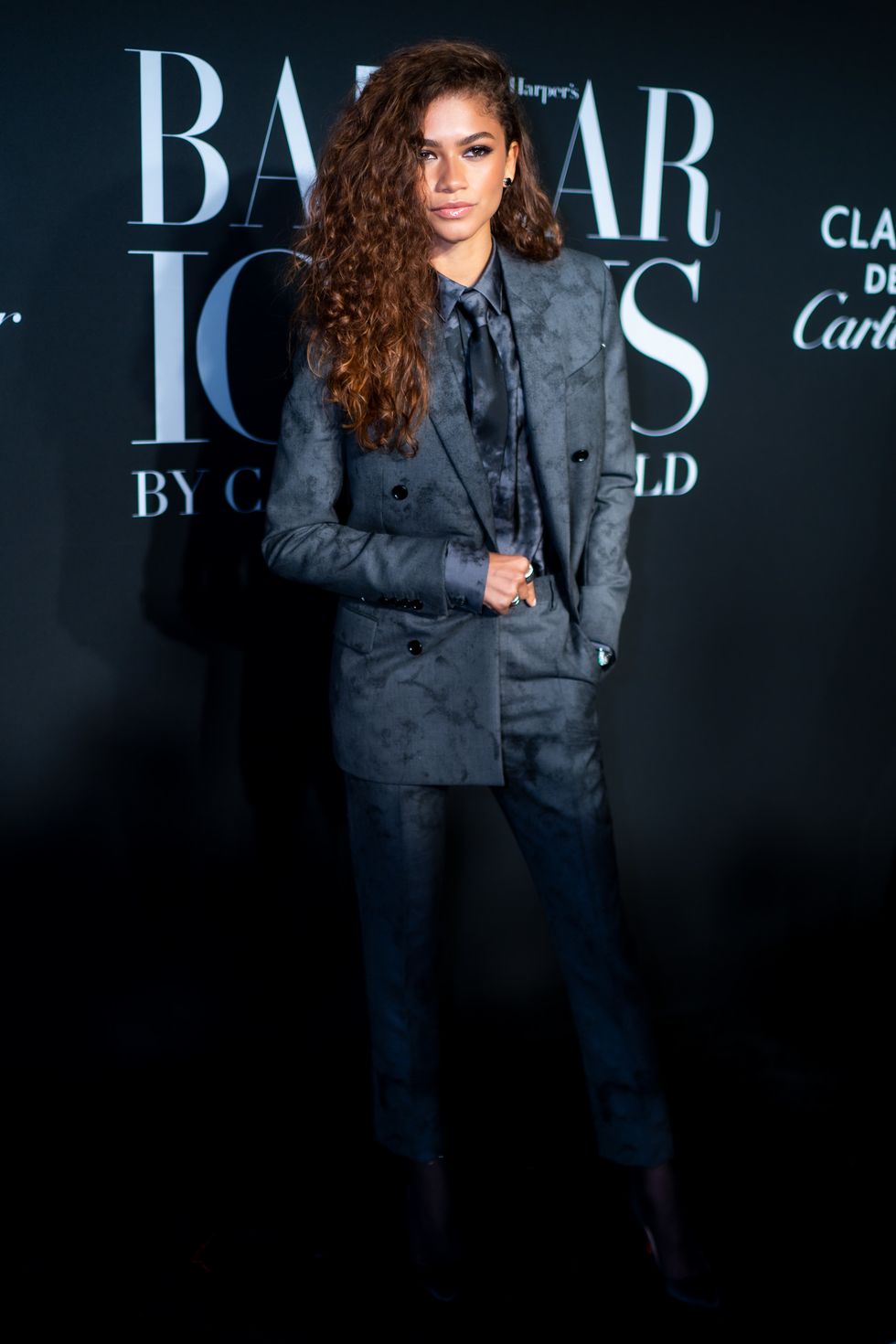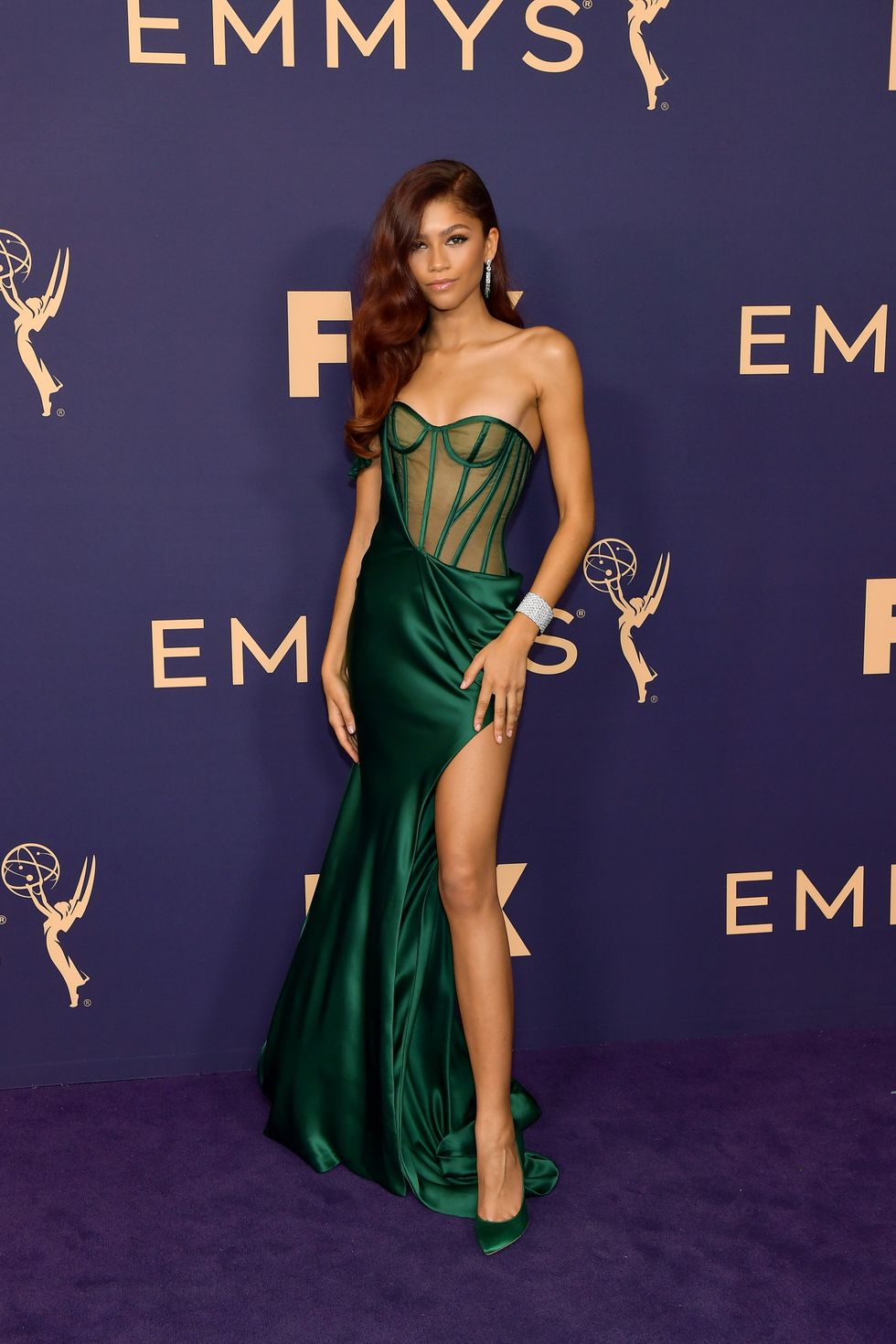
Fashion
Law Roach on 'Legendary,' D&G and Taking Disney Girls Seriously
by Evan Ross Katz
10 March 2020

Law Roach is regarded as the image architect for a reason — his work with A-listers including Zendaya, Céline Dion and Ariana Grande is not defined simply by what they are wearing.
I first knew I wanted to go even deeper with this titan of the fashion world after seeing actress Anya Taylor-Joy in vintage Bob Mackie at the February 18th premiere of her new film, Emma. I wanted to unpack the blueprints of how a fashion moment of this magnitude is finely crafted. "It's kind-of cosmic in a way," Roach tells me over the phone days later. As it turns out, the dress is his own, bought at auction from the Ebony Fashion Fair archives. It previously belonged to Ebony and Jet publisher Eunice Johnson.
I'm rapt as he then launches into a brief history lesson."Her story is a bit unsung; she actually went to Paris and bought couture collections and collections from designers for about forty years. She was very influential in getting Yves Saint Laurent and Emanuel Ungaro and other designers back in the '60s to use black models in their shows. So it's a bit of history that I'm very proud of… when I started working with Anya I brought it for her to look at and try on, and literally we tried on only that dress for the premiere of Emma."
Related | Law Roach's Fashion Month Survival Kit
It's from that point that I'm clear-headed as to why so many of today's best dressed celebrities collaborate with Roach — sifting through his wardrobe and simultaneously his mind, which bubbles with an unclouded love of fashion contagious to anyone in his aura. "You are an absolute visionary," Zendaya told Roach on stage at October's 2019 InStyle Awards as she presented him Stylist of the Year. "You have taught me so much about myself, to not give an F about what people think, to be proud of who I am and when I look in the mirror."
Below, Roach chats about the landscape of stylists of color within the industry three years after becoming the first Black stylist to cover the annual Hollywood Reporter Stylists and Stars issue, the controversial new HBO Max series Legendary (Roach is set to serve on the show's judging panel) and working with stars like Zendaya and Céline Dion.

You've always been a vintage lover, having previously owned your store Deliciously Vintage with locations in Harlem and Chicago. Where did that regard for vintage begin and what is it about vintage clothing that speaks to your sensibilities?
My grandmother used to take me after church. She called it junking. We'd go to Salvation Armys and thrift stores. It was a ritual of hers every Sunday. She'd go to church, go junking for hours and then come home and cook dinner. I remember her buying everything from vintage clothes to vintage dishes. And I was a really young boy, but I remember when I was older and went back to the thrift store it just felt like home. I thought "Why haven't I done this in so many years?" The emotion of the way I felt when I was with her overtook me.
You call yourself an image architect, which I love because it seems to acknowledge the job as more than just choosing clothes. How do you see your role when working with a client?
Well first of all I own the trademark. I am the only one in the world. For me — and not to toot my own horn…
No, please do.
I think that every single one of my clients is different and they have their own point of view and I work really, really hard for that. I do a lot of research, and I dive into who the client is. The way I survey my client and the way that sometimes I get to choose the contractors, meaning the hair and make-up, it really reminded me — when I started to look at what I was doing — so much of what an architect does. I just wasn't doing it for a structure; I was doing it for a person and their image.
You were the first Black stylist to cover the annual Hollywood Reporter Stylists and Stars issue in 2017. Of the cover, you said "It shouldn't just be one or two," referring to stylists of color. Three years later, how would you characterize the landscape of stylists of color within the industry?
Well shit! To be honest with you, when you talk about Hollywood and celebrity, it's still… this is the thing… [laughs]... it's such a touchy subject. There isn't really that much growth. At a certain level there are still only four of us maybe; four or five who have made the list if we're using Hollywood Reporter as a gauge. And I think that it's because there is still a lack of opportunity. Because to get at a certain level in Hollywood there is a natural type of process. Usually how it happens is that you get an internship with a stylist that you love and after you intern and work hard for little or nothing you become an assistant. You work as an assistant and you might start as #3 and work your way to #1. You do that and then you branch out and start to have your own clients. Those opportunities aren't really given to people of color because unfortunately for the most part we come from a socio-economic situation that won't allow us to be able to intern and work for free. There's a lot of different situations that keep people who look like me from taking the traditional route to becoming a celebrity stylist.

Regarding your work with Zendaya, you told Fashionista this in 2017: "I fought for her for years. I didn't come from anybody's lineage, I was never someone's intern, I wasn't in 'the system' so I didn't have any structure. I didn't know what was politically correct, what was right and wrong. I didn't know what you shouldn't say to offend someone. I just didn't understand what they didn't see, that this was one of the most beautiful girls in the world." Can you expand a bit on that?
I always say when we started this fashion voyage designers didn't take "Disney girls" seriously. This was before Miley cut her hair and Selena dated Justin and there just wasn't any interest. And also, to be very honest, a lot of the houses weren't dressing Black girls. Because I really believed in her from the day she walked in. I thought she was a star and I wanted to throw everything that I had, anything that I could do, into her. I just felt like the world needed to know this girl so what it forced me to do was to start building relationships with emerging designers, which in essence was forcing me to be even more creative in a space that I already had no experience in. Back then, for instance, we started working with Miuniku who went on to compete for the LVMH prize. And most recently we've championed Peter Do and Christopher Esber. It's really become second nature and you feel connected to these designers. In my mind these people will become the next Marc Jacobs or Nicolas Ghesquière. And when I see the press and the write-ups about it, it makes me feel good.
So much of making a garment look good on a carpet is posing, something Zendaya is such a natural at. How much are you in conversation about how the look itself should be modeled? I'm thinking about the Berluti suit she wore at the Harper's Bazaar ICONS party and how there are those photos of her running her hand through her hair which feel so editorial.
I have to give credit where credit is due. Zendaya learned all of that from America's Next Top Model. We have to give credit to Tyra. She watched and studied that as a young girl, which a lot of girls did. There is just this thing that she has, which I saw in her from the time that she was a young girl: She has this way of stepping onto the carpet and becoming whoever the clothes call her to be. I think that's a great example that you used but also you look at the Joan of Arc reference from the Met Gala in the Versace. She became this stoic warrior in every way. She can be nervous and as soon as she steps out on that carpet you see that shift happen. It's incredible to watch.
What is it like for you to see Instagram accounts like @Zendayastylefiles entirely dedicated to chronicling your work?
I'm always so impressed. The dedication to identifying every single look is just beyond.
And speaking of @Zendayastylefiles, when I was talking to the person behind the account about you, they told me that the number one thing that impresses them about you is how you've been able to turn nos into yeses; how you have a knack for making the impossible possible. That's a unique quality obviously, but what's one piece of advice you'd give to people trying to advocate for something or someone that's not the obvious choice?
Part of my personal philosophy is that there is always a yes somewhere you just have to find it. It's a yes somewhere waiting for you.

With the Dune press tour coming up, can you give us any kind of tease as to how you're thinking about things?
Well to be real honest with you, I haven't started to prepare for it yet. What I will say is that we are very excited for it because she gets to do it with Timothée Chalamet who has the most incredible style. And though I haven't started it yet, we did have a chat about it and it is going to be a thing. People who follow fashion are really gonna be waiting for this one.
The Armani Privé at the Spiderman premiere comes to mind as one of my favorite Zendaya carpet looks of all time. Do you have one that comes to mind for you?
I think I'm proud of all of them but I really thought the Emmys/Vera Wang as a total look was incredible because Hollywood has this infatuation with redheaded women in green dresses and I think that that story has been told for decades but the narrative has only included a white woman with red hair and a green dress and I think that now, because of that look, she gets to be mentioned alongside some of the most beautiful and revered women in the world for that reason. But there's a lot of my babies that I love.
So in the case of Zendaya, you're really helping usher her ascent into the spotlight, but in the case of Céline, you have an established veteran, one who's got some iconic red carpets in her rearview. How was your approach different given the public's regard for Celine and her own personal style that's been developed over decades in the spotlight?
Well it begins again with research, and that research is often emotional. So when I got the Céline job, which was incredible because when they called me I just kept saying "Céline who?" I hadn't dreamt that dream yet. That was totally out of left field. For me I was like "It's Céline Dion, everyone's going to say yes," and actually everybody said no. Nobody wanted to lend her clothes for various reasons and I was shook. It took me back to when I was first requesting for Zendaya and people were saying no, in that I didn't understand why they didn't get it. But Céline and I… I think we had a four-hour fitting and the things she gravitated toward were so counter to what I thought Céline Dion was. And I was like, "Why don't we know this about her? Why haven't we seen this or experienced this?" She was wanting to wear all of the things that I had brought just in case. So when I figured that out I knew immediately that we'd need a new fitting. Because she's been around for so long we all figured she was way older than she is. And the way she was dressing was what people expected, but it wasn't really her, in my opinion. So I wanted to show the world the Céline Dion that I had just met.

I love how you speak about the process as emotional.
Well it's very emotional for me. I have to get it right. I have to figure out who she is. And I have to represent her and show her to the world.
What's the most meaningful feedback or praise one can give you when it comes to your job?
I am really fed when people tell me that my work and my journey is influential to them. I was in New York and there was a young Black guy who approached me and said, "I know I can because you did." And that was incredible for me.
How do you balance having so many clients, all of whom require your attention?
I don't have a personal life and I am praying and asking the universe to give me balance because right now I don't have it because I literally wake up every day and I work as if it's my first week doing this. I just don't know how to work any other way. I am very hands on and try to do every single one of my fittings. I want to make sure that when my client steps out of the door or in front of the camera that they feel the most beautiful that they've ever felt before every single time. But again, hoping for more balance from the universe.
Legendary, your new HBO Max show, has faced its fair share of controversy since the announcement of the show was made. I'm not interested in rehashing that, but rather want to give you the opportunity to shift the conversation. What are you most excited about this show and why do you think it's important that people give it a shot before prejudging?
I think that Legendary is no different from America's Got Talent, from The Voice, from Idol… it's the same type of show that we've been invested in for over a decade now. What is different is that it's giving an opportunity to a group of people that have never had this opportunity. I think that the ballroom scene has gotten a lot of attention over the last year or so because of incredible shows like Pose, but there's so much more to it. People are under the impression that ballroom is just voguing and it's not. And I just think that putting an underrepresented group of people in the limelight can only be amazing. Because those kids came to perform, baby. I think it's going to shine another light on ballroom culture that needs to be there.
I'm going to ask you a question now that you can pass on if you'd like. You outfitted Zendaya in Dolce & Gabbana at the 2017 Met Gala, which was a year before their most public controversy ended up canceling their China show. Since then we haven't seen you really work with the brand until recently, when I saw Kerry Washington in D&G for an InStyle cover shoot you architected. What is your current stance on the brand?
I would love to answer that question honestly because there was an article in an Asian newspaper that said that I had recently said that I would never use Dolce & Gabbana on my clients and I had them retract that because I never said that. I do not have the last say in what my clients wear and I never would ask for that. I have recently used Dolce for that editorial you mention. What I did do over the course of this thing is ask my clients how they felt about Dolce and wearing Dolce. I would never ever, ever not bring something based on my ideology or my opinion of a brand. Never. Because that is not my job. And I have a personal relationship with Domenico and Guilherme Siqueira, Domenico's partner. Now, did I disagree with what happened? Yes. Any time you offend an entire group of people there is a problem. But am I also a person who thinks that people deserve to see what they did wrong and to correct and to be forgiven for things? Yes, I do. So I never had a stance on Dolce and if my clients should wear it.
I want to end by asking you to spotlight some young creatives who are on your mind, whether in or out of the fashion industry. What young folks are you excited about?
I think that Christopher John Rogers is incredible. I think his potential as the next great American designer is very strong. Campbell Addy is another one. Like the world has been waiting for these people to show up, and now they're here.
Welcome to "Wear Me Out," a column by pop culture fiend Evan Ross Katz that takes a look at the week in celebrity dressing. From award shows and movie premieres to grocery store runs, he'll keep you up to date on what your favorite celebs have recently worn to the biggest and most inconsequential events.
Photos via Getty